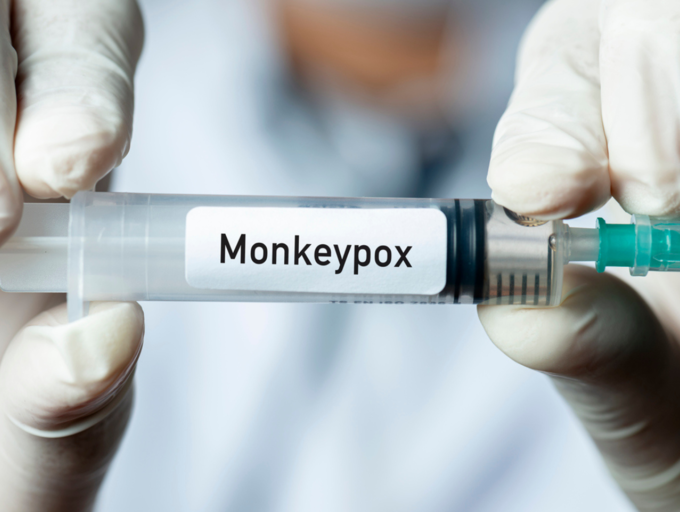There’s been a stressing pattern as of late of talking over monkeypox as though it’s a physically sent contamination, or more regrettable, a “gay infection” that won’t influence most of individuals. Nor is valid, as another exploration letter in the CDC diary Emerging Infectious Diseases has clarified.
The letter reports an instance of a man in his twenties who came to a California crisis division following seven days of rashes across his body: minuscule, liquid filled rankles which had been turning up all through the earlier week.
Specialists tracked down injuries of various stages on his hands, his middle, and back, and, surprisingly, a hard one on his lip. His penis, gonads, and butt had none, and he had no exemplary auxiliary indications of disease like fever or lymph hub enlarging.
“Aftereffects of complete blood count and essential metabolic board results were mediocre,” the letter reports, and the patient tried negative for HIV, gonorrhea, chlamydia, and COVID-19. Nonetheless, when they tried the liquid from a rankle on his palm, it returned positive for the monkeypox infection – explicitly, the infection clade that has caused such countless cases in Europe and the US.
Dissimilar to a considerable lot of the monkeypox patients seen by wellbeing specialists throughout the course of recent months, the man for the situation report had no set of experiences of close sexual contact with anyone inside the past 90 days. Truth be told, he detailed no nearby indoor exercises other than going on planes and trains.
“The primary sore seemed ≈14 days after he went to a huge, swarmed open air occasion at which he had close contact with others, including close moving, for a couple of hours,” reports the letter. “He said that a huge number were in sleeveless tops and shorts. He wore pants and a short-sleeved top. He saw no skin injuries on anybody present, nor did he notice any individual who appeared to be debilitated.”
Not in the least did no one at the occasion appear to be wiped out, yet – beyond the rash – neither did the patient. As per the survey, he encountered no fevers, chills, migraines, hack, weakness, or anorectal agony – none of the side effects that have been accounted for by other contaminated people.
“This case featured the peculiarity of clinical appearances as they showed expected courses of transmission during the 2022 multicountry flare-up of monkeypox,” compose the analysts. “His case features the potential for spread at such get-togethers, which might have suggestions for pandemic control.”
The case comes closely following another review, distributed for the current week in the Annals of Internal Medicine, which found positive monkeypox infection PCR brings about examples from asymptomatic men who engage in sexual relations with men. Out of 200 patients, analysts from Bichat-Claude Bernard Hospital in Paris, France, found 13 who tried positive for the infection. Simply two proceeded to foster side effects.
The discoveries uncover an astounding – and stressing – probability that asymptomatic transmission of the monkeypox infection is conceivable. That implies two vital things. First and foremost, significantly more exploration is required into how the infection can spread – whether it be through sexual contact, tainted things like sheet material, or public occasions. Furthermore, the ongoing general wellbeing reaction, which focuses on inoculating just those individuals who have had close contact with an affirmed case, may not be satisfactory.
“Whether this demonstrates viral shedding that can prompt transmission is obscure,” the French report closes. “Provided that this is true, the act of ring postexposure inoculation around indicative people with plausible or affirmed MPXV disease may not be adequate to contain spread.”
Monkeypox has brought up a few issues. Considering the new pandemic, which is by all accounts no place near being finished and the development of new wellbeing gambles, questions are for the most part around the spread and transmission of the viral sicknesses.
As of recently near 20,000 monkeypox cases have been authoritatively followed around the world. A sum of 6 affirmed instances of monkeypox have been accounted for in India.
The viral contamination is spreading at a quicker pace because of which the World Health Organization (WHO) proclaimed it as a worldwide wellbeing crisis a couple of days back. This time, the monkeypox flare-up is being found in nations which even have no set of experiences of the sickness.
What poses a big threat in viral infection?

The transmission of the illness certainly represents a major danger and a higher wellbeing risk. Notwithstanding so many limitation measures, COVID took the state of a pandemic and tainted and guaranteed such countless lives over the most recent two years. Regardless of the strictest measures, COVID cases continued to rise making it challenging for wellbeing organizations and state run administrations all around the country to continue to conceptualize more current measures to control it.
Transmission of a disease happens when individuals connect with one another. The economy of a country, nature of the work environment, method of transportation and social state of most of the populace likewise assume a greater part in deciding the speed of transmission of a sickness.
The silent spreaders
Apart from the visible means of transmission of the infection, there are several silent spreaders too.
One of the major contributors of this “silent spreader” category are those people who are asymptomatic.
Unlike other silent spreaders– like those who intentionally do not test themselves and try to suppress it before others or those who despite showing symptoms do not take necessary precautions— the asymptomatic ones are oblivious to the fact that they carrying a huge load of the virus and are equally capable of infecting other people.
Asymptomatic monkeypox cases: Is it a reality?

Indeed! Asymptomatic cases with monkeypox are a reality.
These patients can have abnormal show as no impulsive and no prodromal side effects. These patients can be asymptomatic during the hatching time frame which is 5-21 days, makes sense of Dr Monalisa Sahu, Consultant Infectious Diseases, Yashoda Hospitals Hyderabad and adds that they could on extremely uncommon events at any point have minor side effects which may not be clear and slip through the cracks, lastly land up in entanglements like encephalitis; this draws our consideration towards the way that asymptomatic cases have equivalent potential as suggestive cases in spreading the illness.
Anyway because of the way that they don’t display the side effects it is challenging to discover their presence and subsequently is hard to sort out the idea of transmission brought about by them.
Assuming you have great insusceptibility and how much infection entering your body is less you probably won’t show side effects yet that doesn’t mean you can not spread the disease, says Dr. Mahesh Kumar, Consultant, Internal Medicine, Narayana Health City and adds that any individual who has had a couple of moments of openness to the infection can be asymptomatic and are a major danger to the local area.
A few exploration studies have likewise revealed insight into the asymptomatic monkeypox cases. A new report found that three men tried positive for monkeypox without showing any side effects. “Every one of the three men denied having had any side effects long when the example was taken. Not even one of them detailed openness to an analyzed monkeypox case, nor did any of their contacts create clinical monkeypox,” the review says.
The idea of asymptomatic cases and the seriousness to which they can spread the disease is at this point unclear. The WHO in its most recent update on monkeypox says, the degree to which asymptomatic contamination might happen is obscure.
